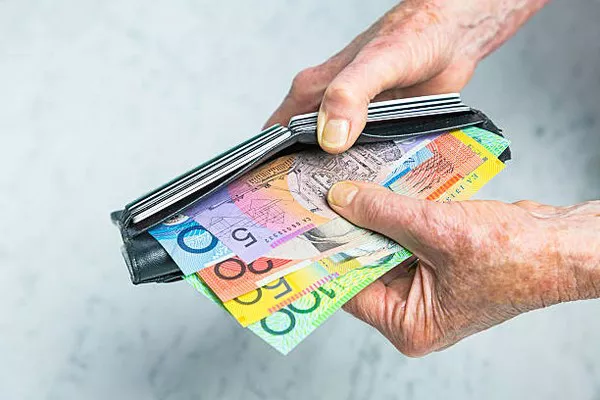Australia, known for its iconic wildlife, beautiful landscapes, and vibrant cities, has a unique currency system that plays a critical role in its economy. The official currency of Australia is the Australian dollar, denoted by the symbol “$” and the abbreviation “AUD.” The Australian dollar is used not only in Australia but also in its external territories, including Christmas Island, Cocos (Keeling) Islands, and Norfolk Island.
History of the Australian Currency
The history of Australian currency dates back to the early days of European settlement in the late 18th century. Before European colonization, various Indigenous groups across Australia used traditional forms of trade and currency, such as tools, shells, and stones, for barter and trade among themselves. With the arrival of the British settlers, the need for a more formalized system of currency arose.
The first official currency used in Australia was the British pound, as Australia was initially considered a British colony. In 1910, the Australian pound was introduced as the country’s official currency, replacing the British pound. The Australian pound was pegged to the British pound at par value.
In 1966, Australia made a significant currency change by switching from the pound to the decimal currency system. The Australian dollar (AUD) was introduced on February 14, 1966, marking a new era in Australian monetary history. The dollar was divided into 100 smaller units called cents. Australia’s transition to the decimal currency system was met with positive reception and has since become an integral part of the country’s economic landscape.
Features of Australian Currency
The Australian dollar banknotes are issued by the Reserve Bank of Australia (RBA) and are widely used for cash transactions across the country. The Australian Currency Act 1965 gives the RBA the authority to issue, regulate, and manage the supply of Australian banknotes and coins in circulation.
The Role of the Reserve Bank of Australia
The Reserve Bank of Australia (RBA) plays a crucial role in managing the Australian currency and monetary policy. As Australia’s central bank, the RBA is responsible for setting the official cash rate, issuing banknotes, regulating the financial system, and maintaining price stability.
One of the key functions of the RBA is to regulate the supply of money in the economy through its monetary policy decisions. By adjusting the official cash rate, the RBA influences borrowing costs, inflation levels, and overall economic activity in the country. These measures help ensure that the Australian economy remains stable and resilient to external shocks.
In addition to its monetary policy responsibilities, the RBA also oversees the design, production, and distribution of Australian banknotes. The RBA works closely with various stakeholders, including commercial banks, retailers, and law enforcement agencies, to ensure the security and authenticity of Australian currency.
Symbols and Usage of the Australian Dollar
The Australian dollar is denoted by the symbol “$” and is subdivided into 100 cents. The currency code for the Australian dollar is AUD, which is used in financial transactions and international trade to denote the Australian currency.
The Australian dollar is widely accepted across the country for transactions ranging from everyday purchases to financial investments. Australian banknotes and coins are used in retail stores, restaurants, public transport, and other venues where cash transactions are prevalent.
In addition to domestic usage, the Australian dollar is also traded on the foreign exchange market (Forex) as one of the major currencies in the world. The exchange rate of the Australian dollar against other currencies fluctuates daily based on factors such as economic data, interest rates, geopolitical events, and market sentiment.
Security Features of Australian Currency
To protect the integrity of the Australian currency and prevent counterfeiting, Australian banknotes and coins are equipped with advanced security features. These features are designed to make it difficult for counterfeiters to replicate the currency accurately.
Some of the security features found on Australian banknotes include:
Clear Windows: Some banknotes feature transparent windows that contain intricate designs and patterns visible under light.
Color-changing Elements: Certain parts of the banknotes change color when viewed from different angles, making it difficult to reproduce accurately.
Microprinting: Tiny text or patterns are printed on the banknotes that are only visible under magnification, serving as another layer of security.
Metallic Security Thread: A metallic thread embedded in the banknote paper can be seen when held up to the light, indicating the authenticity of the note.
Raised Printing: Tactile elements such as raised printing can be felt on the banknote’s surface, providing a physical indication of authenticity.
Conclusion
The Australian dollar, as the official currency of Australia, plays a central role in the country’s economy and financial system. With its rich history, unique features, and advanced security measures, the Australian currency reflects the diversity and resilience of the Australian economy.
As Australia continues to evolve and adapt to global economic trends, the Australian dollar remains a symbol of stability, prosperity, and innovation. Whether used for everyday transactions or international trade, the Australian currency embodies the spirit of a modern and dynamic economy in the heart of the Asia-Pacific region.
In conclusion, the Australian dollar stands as a testament to Australia’s commitment to financial integrity, economic growth, and prosperity for its citizens and partners around the world.


